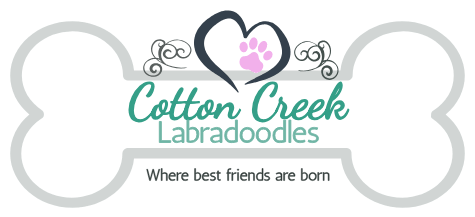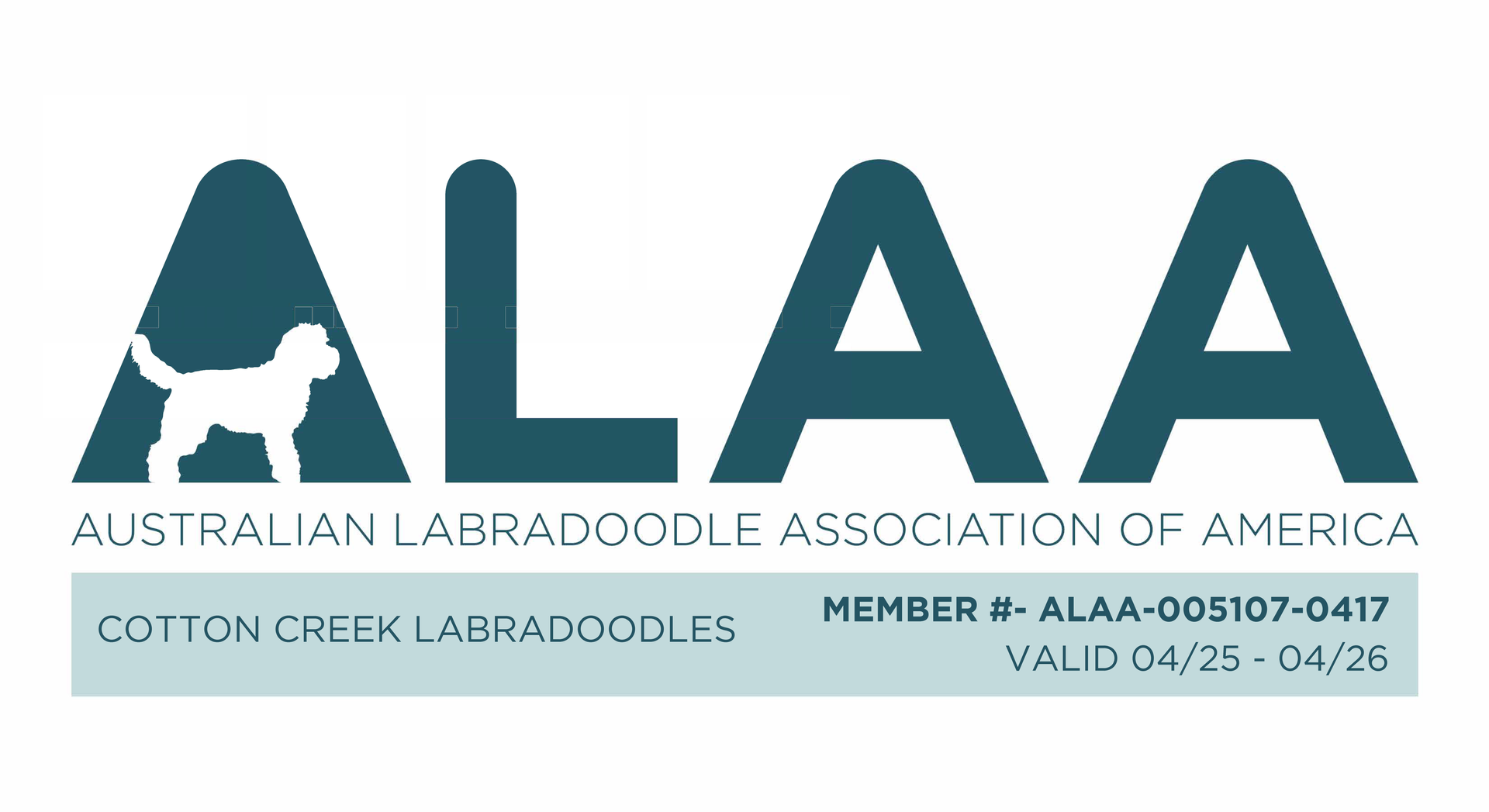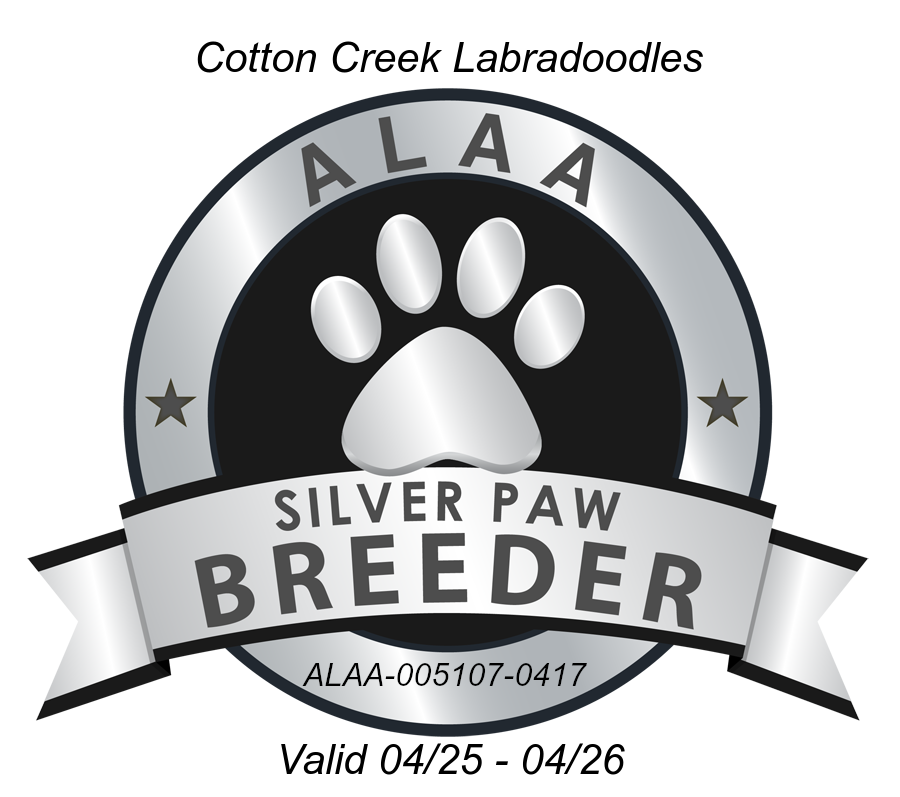Australian Labradoodles
About The Australian Labradoodle (ALD)
History
The Australian Labradoodle breed was started back in the 1980's to serve as an allergy and asthma friendly guide dog. Breeders worked to produce litters with consistent conformation, coat type, and temperament. In the 1990's, a number of other dog breeds were introduced into the Labradoodle lines, most often the English Cocker Spaniel and American Cocker Spaniel.
A true Australian Labradoodle is considered to be a cross between the Poodle, Cocker Spaniel and Labrador Retriever, while the Labradoodle is a cross between only the Labrador Retriever and Poodle. There are organizations, such as the Australian Labradoodle Association of America (ALAA) to protect the development of the Australian Labradoodle lines with the established guidelines.
Better Breed By Design
Australian Labradoodle Association of America (ALAA) registered Doodles have undeniable charm, but it's their lineage that truly sets them apart. Our breeders' bloodlines are multigenerational, with decades of verified pedigrees and health testing spanning generations. These pedigrees and health credentials from multigenerational ALDs ensure our Doodles are engaging and quick learners with a friendly disposition. Whether being a family companion, a service dog, or a therapy dog, they will have the breeding that promotes strong characteristics needed to fill their role. Plus, their low allergen qualities make them a breath of fresh air to bring joy without compromise to owners and dog lovers with allergies. ALAA Doodles are truly the perfect match for any owner and have the pedigree to prove it.
Coat Types
Fleece Coat: loose waves or curls, but can also be straight. This is the “typical” Australian Labradoodle coat type. The initial puppy coat is easy to maintain, but will transition from a puppy to an adult coat around 7 to 9 months of age. At this time, special care must be taken to prevent matting so frequent brushing/combing will be important. You may even want to consider a profession puppy trim at this time. Adults need to be brushed at least 2 to 3 times a week. You will be provided with information on proper brushing and combing techniques. Adults need to be groomed regularly. Fleece coats are soft and do not have that "doggy smell". They can be straight, wavy or curly. They are well-tolerated by most people with allergies and asthma.
Wool Coat: tight curls and dense feel, like a sheep. It is a non-shedding coat and needs frequent professional grooming. This coat is also well-tolerated by people with allergies and asthma as well.
The Australian Labradoodle Is The Perfect Family Pet
Sizes
Standard: 21” to 24” at the shoulder. Weight typically 50 to 65 pounds.
Medium: 17” to 20” at the shoulder. Weight typically 30 to 45 pounds.
Miniature: 14” to 16” at the shoulder. Not more than 17”. Weight is typically 15 to 30 pounds.









